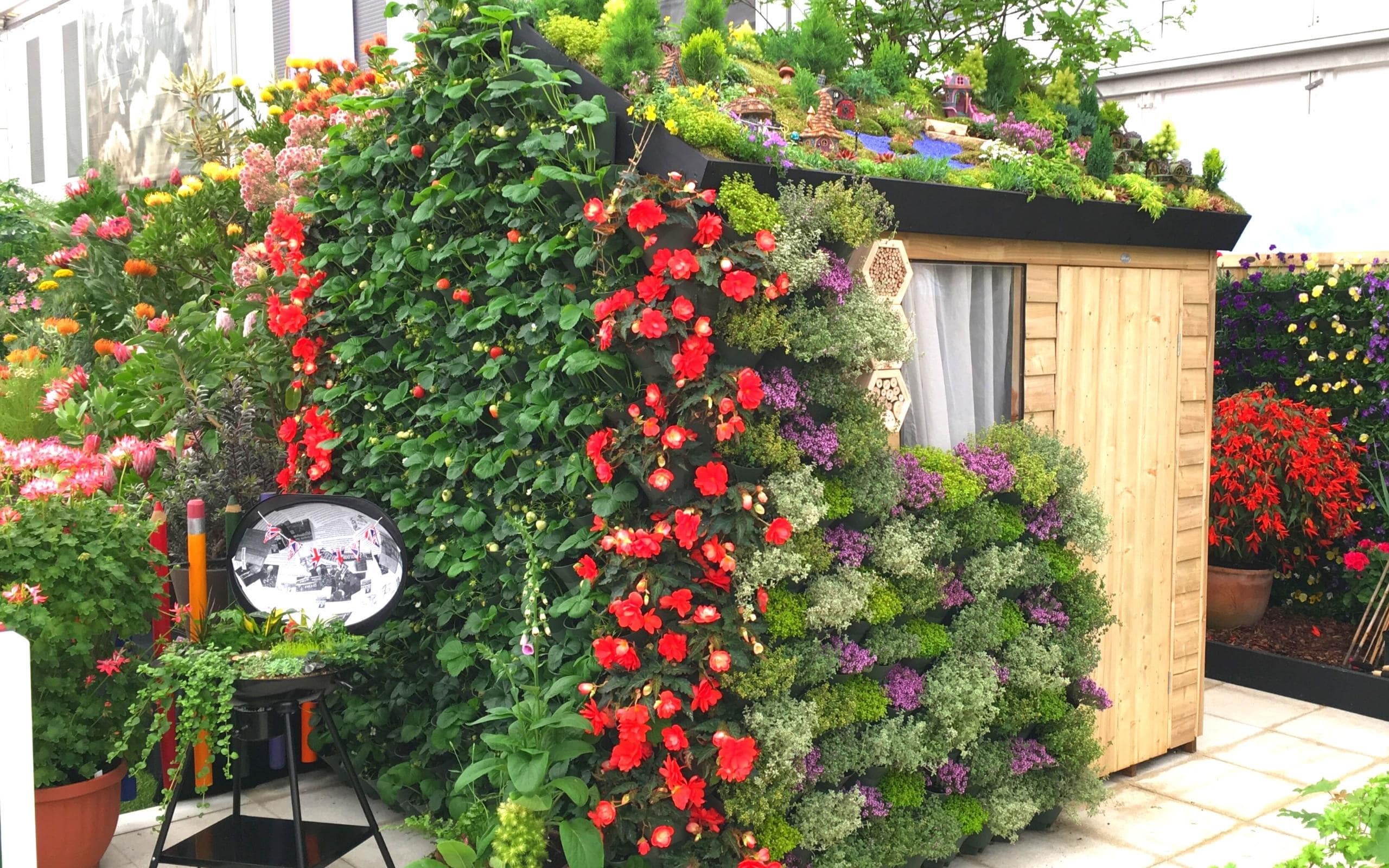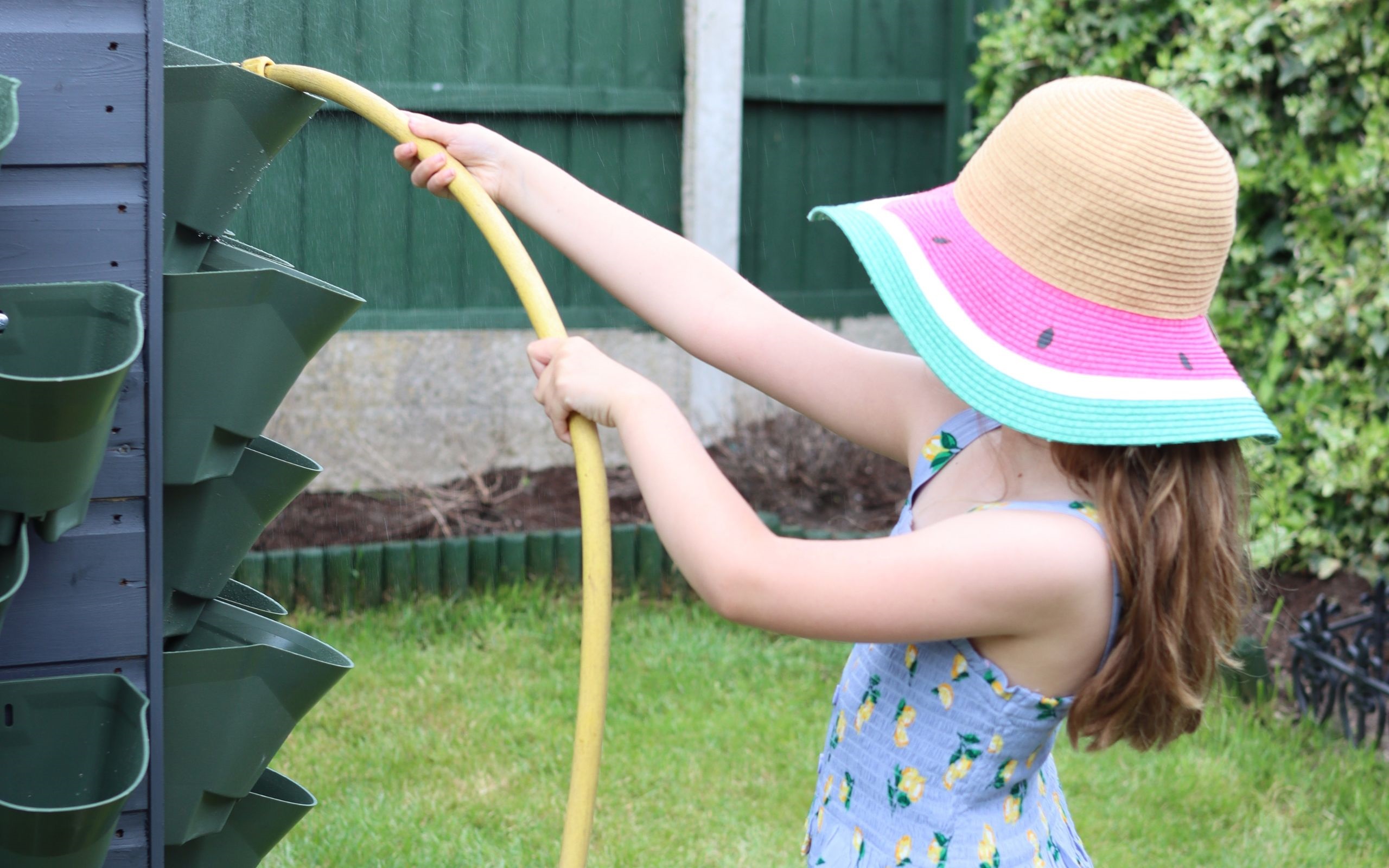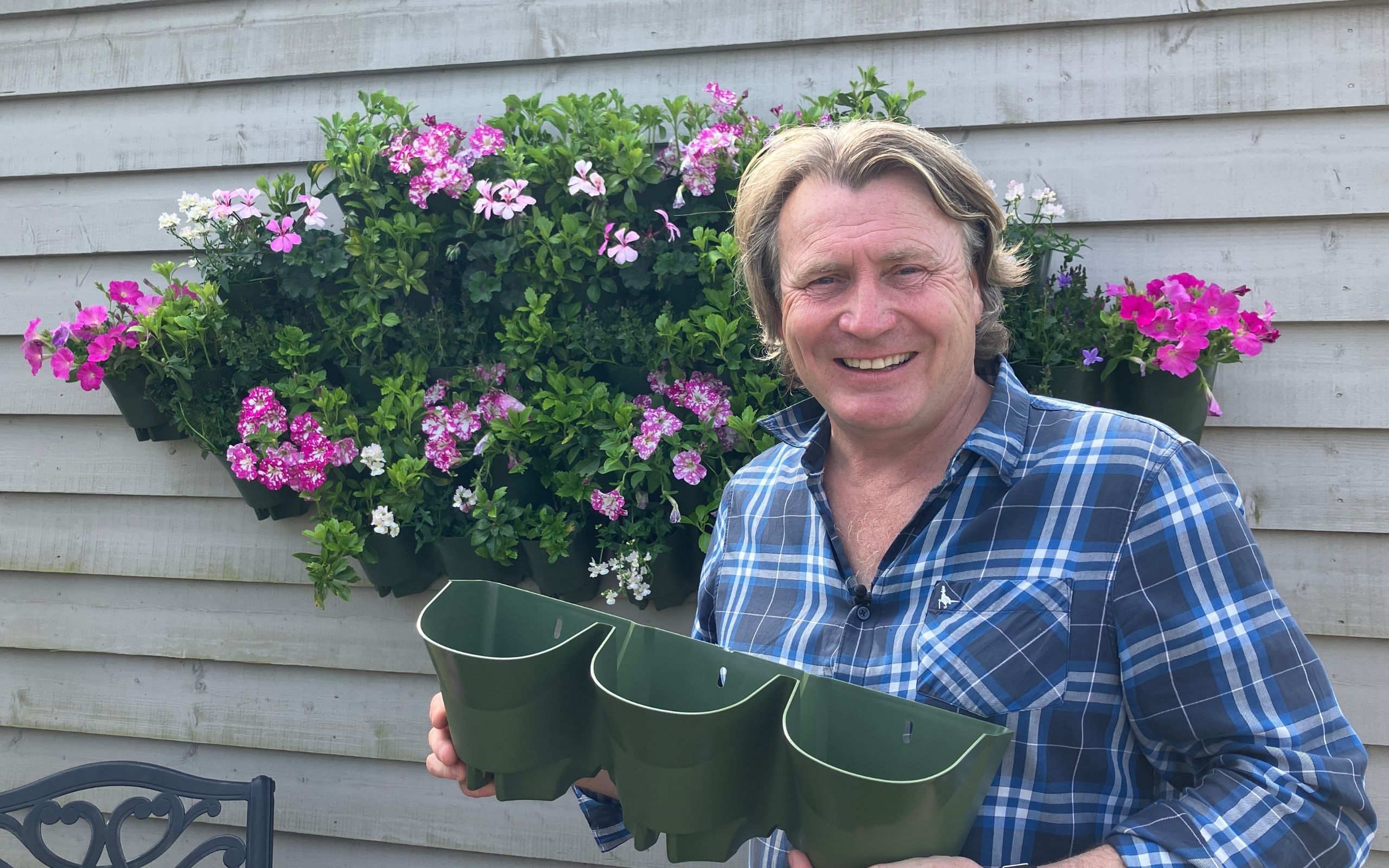Keep your living wall looking vibrant and healthy throughout the year with a routine watering and feeding system to suit your chosen plants. Find out how to give the best care you can to your living wall for a wonderful display for as long as possible.
How to water your living wall

How your Wonderwall kit helps with watering
Wonderwall’s Living Wall kits have been designed to make watering as simple as possible. Each kit has a reservoir space beneath the plants’ positions which should be filled with water to provide enough hydration can help to care for your plant, which could help you when you are away on holiday. Before placing your plants in their 1-litre pots into position, water with a hose or a watering can from the top, until each of the reservoirs are full. Then, you can position your plants in their existing 1-litre pots into the Living Wall kit.
When watering your plants, always do so from the top layer, as the kit has a cleverly designed filtering system to assist with irrigation. Which will automatically allow the water to trickle down to the lower layers. The frequency of watering can change depending on the time of the year, and the plants you are growing. A good general guide is to water your living wall once a fortnight in spring and autumn, once a week in the warmer summer months, and then no watering is necessary during the winter.
Weather dependent watering
Much of when you water your plants is weather-dependent, so ensure to use this as a heavy influence in your watering routine. For example, when the weather has a bit of a chill, and perhaps wet, your plants are unlikely to require additional moisture. On the other hand, if the environment is erring towards drier and hotter conditions, your plants will benefit from more frequent watering. A great way to be sure if your plants are in need of hydration, is to test the soil with your finger. Push your finger into the soil a couple of centimetres. If it is cool and moist to the touch, then watering is not necessary. If it feels more or less completely dry, then giving them a decent watering is needed.
Keep in mind that in hotter conditions, the plants at the top of your Wonderwall kit will drink up a lot of the water you provide without allowing it to filter down. So, ensure to check each layer individually to ensure they each have enough moisture to help them stay luscious and healthy. You can also lift the individual 1-litre pots out of the kit and test the weight. Plants with plenty of water will be much heavier than dry ones. If the leaves of your plant are wilting too, especially if periods of drought or hot weather have been abundant, this is also a good indicator.
Also, make sure to stay aware of the positioning of your Wonderwall unit. If, for example, your living wall is on a vertical surface partially or fully covered by eaves, roofing, or any other surface, when it rains your plants may not have full access to the water available. Much like we would when standing under shop canopies if caught in a sudden downpour.
How to feed your living wall

All plants will perform well when they are fed with plenty of beneficial nutrients. Figuring out the best frequency for feeding, and the type of food your plants require is a fairly simple process.
The best way to feed your plants in containers such as a Wonderwall living wall, is diluted, liquid fertiliser, which you can incorporate into your existing watering routine. Liquid feeds help to avoid overfeeding your plants, which can lead to scorching, which can happen more often when using solid feeds for your container-grown plants. Make sure you check the instructions on your liquid plant food for the best measurements for dilution and frequency of use.
Different types of liquid plant food suit different plants better, so make sure to choose the right ones for your plants. For example, high-nitrogen feeds are better for foliage-heavy plants, whilst a tomato feed is ideal for flowering plants, promoting more buds rather than leaves.
The frequency of feeding can depend on the types of plants, time of the year and those respective plants’ growing seasons. It is best to aim to carry out the majority of your plant feeding between spring and summer when your plants are growing and producing most of their flowers or crops. By the time winter comes around, your plants will gain no benefit from feeding, so you can leave this out of your care routine for your living wall plants.
Eventually, with your care, your plants will start to outgrow their 1-litre pots and will be ready to be planted out into the garden to continue to thrive. Once this happens, you can choose new, young plants to replace and refresh your living wall display.
Final thoughts from David
By giving your living wall plants the best care, you can keep them looking healthy and fresh for as long a period as possible. Make sure to check your individual plants’ watering and feeding requirements, and if you’re not sure, pop into your local garden centre and ask for their expert advice.
Chartered Horticulturalist, Author, Broadcaster
David Domoney is our Brand Ambassador, a partnership which started in 2024.
David is a Chartered Horticulturalist, Broadcaster, and Author, with over 40 years of professional horticulture experience. He regularly presents on ITV’s ‘Love Your Garden’, ‘Love Your Weekend’, ‘Gardening Club’, and their flagship daytime show ‘This Morning’. His bestselling book, ‘My Houseplant Changed My Life’ published by DK Books, centres on the mental and physical health benefits indoor gardening can have.
David’s blogs and videos for Wonderwall will be able to help you get the most out of a small space with their wall-planting products. Whether that’s with design and planting ideas, suggestions for where to use the product, or how to grow your own herbs and vegetables all in one convenient space.
Wonderwall’s Living Wall products are designed to make the most of vertical space, whether outdoors against a wall, shed, greenhouses, balconies or even inside your property. These Living Wall kits have been carefully designed to make caring for your wall-grown plants as simple as possible. Wonderwall allows you to enjoy a space-saving approach elevating a lifeless place into an oasis and haven for wildlife. Adding any greenery is a rewarding way to brighten any space. These walls are just as good as a hanging basket allowing things to trail and arch. Plus, they not only create a vibrant living display for spring and summer, but all year round with striking hardy perennials and evergreens.
Each planter contains a water reservoir to help keep each plant steadily watered for up to three weeks. Plus, once installed, you only need to water your Living Wall from the top row of planters; the kit is designed to filter the water down through the layers to the bottom. Any living space, whatever the size will help reduce your carbon footprint.
Prince Edward, the Duke of Edinburgh, personally selected David for his Award for Horticultural Excellence. He is also a Patron of three charities: Birmingham Botanical Gardens; the British Hedgehog Preservation Society; and the Greenfingers Charity. David is also an Ambassador of many additional charities, including SANE, RSPB, War Widows, Thrive, Melanoma Fund, Air Ambulances UK, and the Ambassador of the Chartered Institute of Horticulture. He is also a lifetime member of the Horticultural Trades Association.








